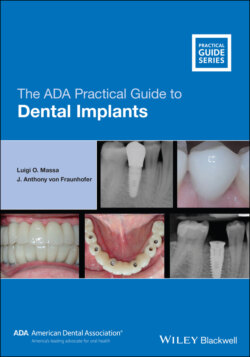Читать книгу The ADA Practical Guide to Dental Implants - J. Anthony von Fraunhofer - Страница 11
Partial and Complete Edentulism in the Twenty‐First Century
ОглавлениеThe population is aging and, by 2030, more that 20% of the U. S. population will be aged 65 years or older, Fig. 1.1 [1].
These projected data indicate that within 10–12 years, about 20% of the population will be “senior citizens,” namely 65 years or older [1]. Although advances in medicine and pharmacology, together with improved nutrition, dietary awareness and exercise, have significantly improved the average life expectancy, the outlook for maintained and even improved dental hygiene as well as overall oral health still looks bleak. In fact, partial or complete edentulism is increasing. Whereas fluoridation has markedly reduced dental caries [2, 3], the prevalence of tooth loss through periodontal disease, enamel erosion, wear, trauma and disease (e.g., cancer) is growing [4–7].
Figure 1.1 Projected aging of the United States.
(Source: Based on United States Census Bureau. Release Number CB20‐99: 65 and Older Population Grows Rapidly as Baby Boomers Age. Washington, DC, June 25, 2020).
Figure 1.2 Prevalence of edentulism by race and ethnicity in adults ≥65 years [9].
(Source: Based on Centers for Disease Control and Prevention. Edentulism and tooth retention. Atlanta, Ga., September 10, 2019).
According to the American College of Prosthodontics, more than 35 million Americans are edentulous, and 178 million people are missing at least one tooth and these numbers are expected to grow over the next two decades [8].
What is distressing about these statistics is that edentulism affects our most vulnerable populations – the aging and the economically disadvantaged, Fig. 1.2. In the geriatric population, for example, the ratio of edentulous to dentate individuals is 2 : 1, with about 23 million being completely edentulous and some 12 million are edentulous in one arch. About 90% of edentulous patients have dentures and some 15% of edentulous patients will have dentures made each year [8].
The consequences of partial or complete edentulism are well‐known and include many facets of the quality of life (QoL) as well as facial appearance, self‐image and self‐confidence. Overall, health consequences of edentulism encompass significant nutritional changes, digestive issues, obesity, diabetes, and coronary artery disease to name but a few.
